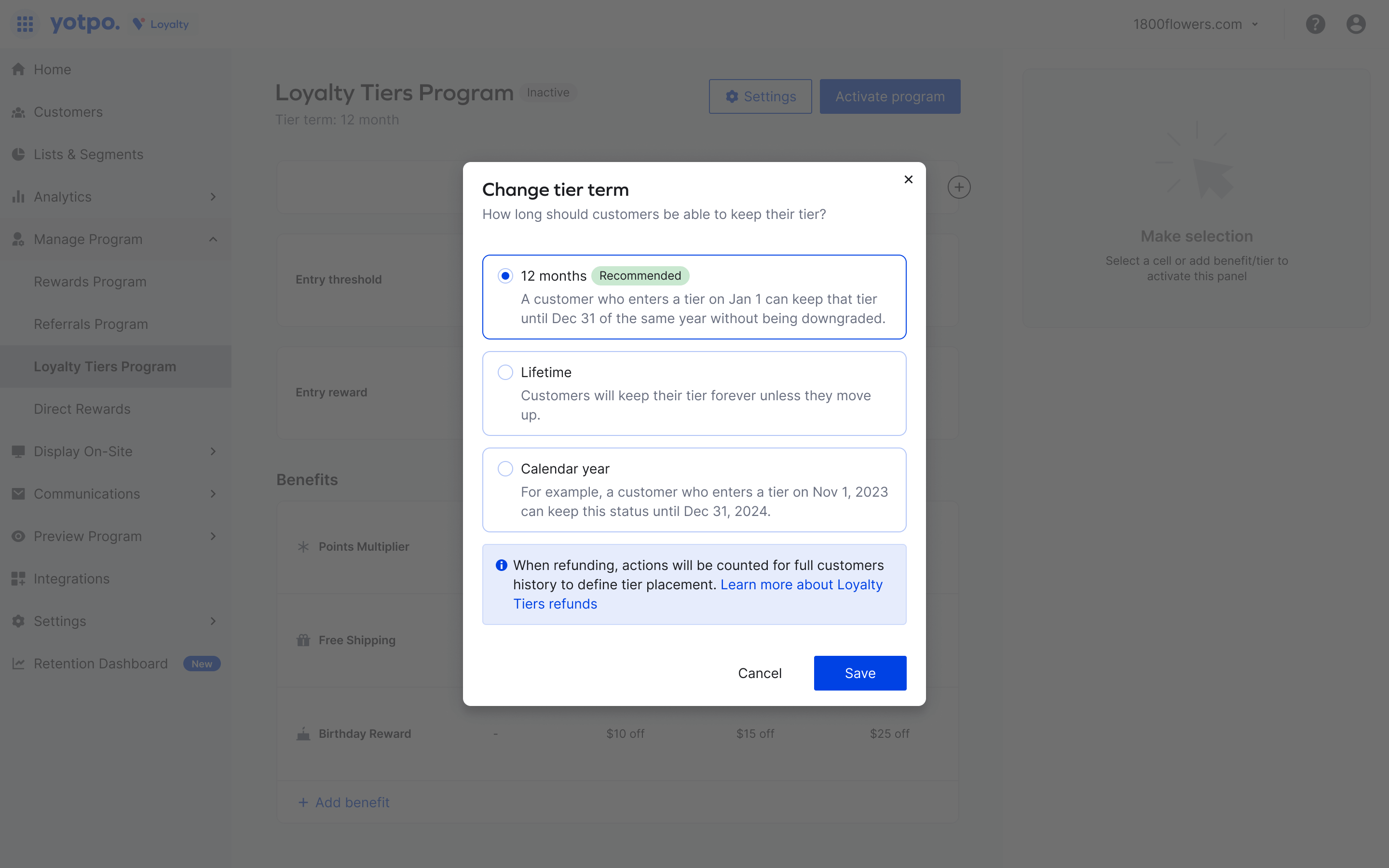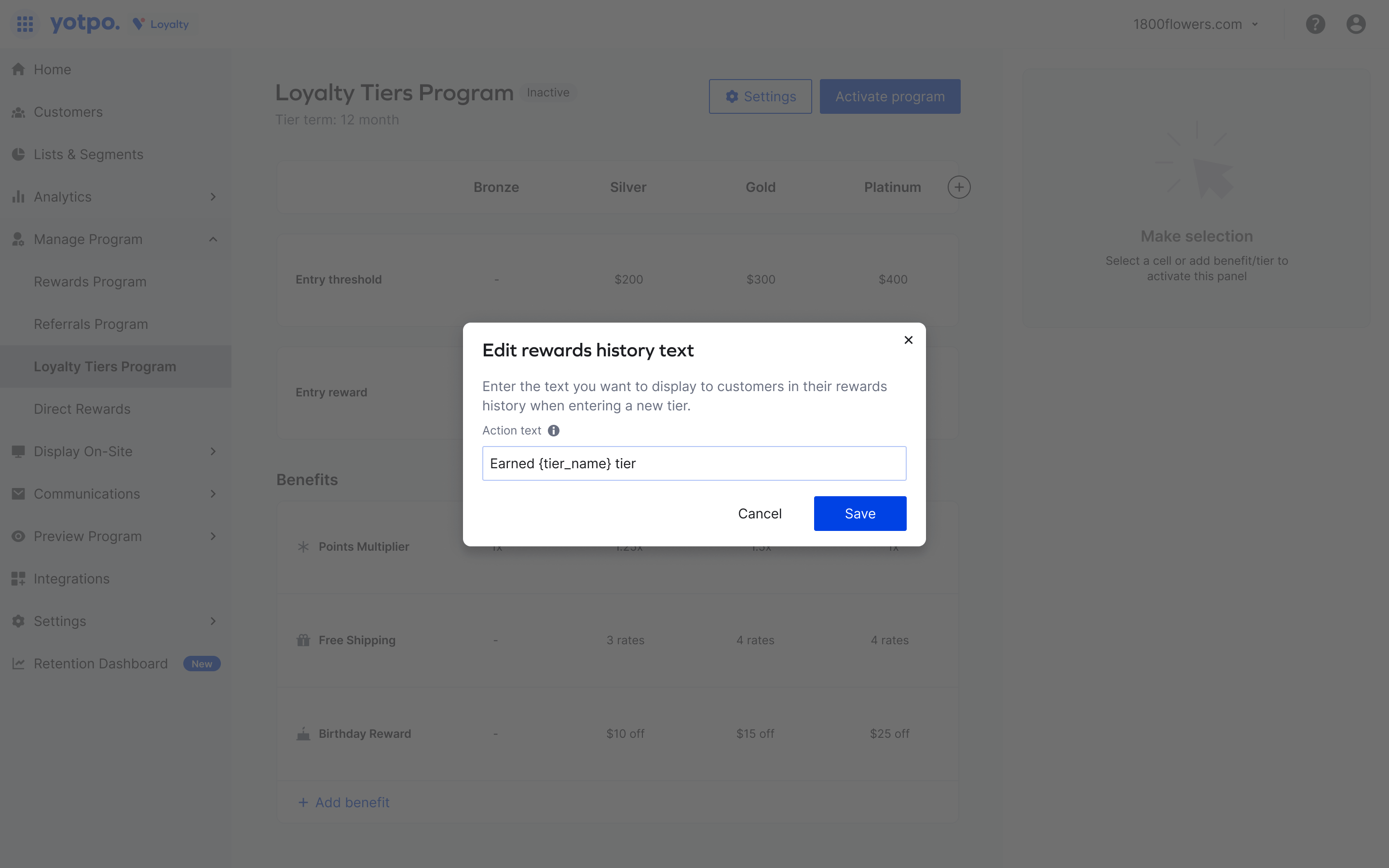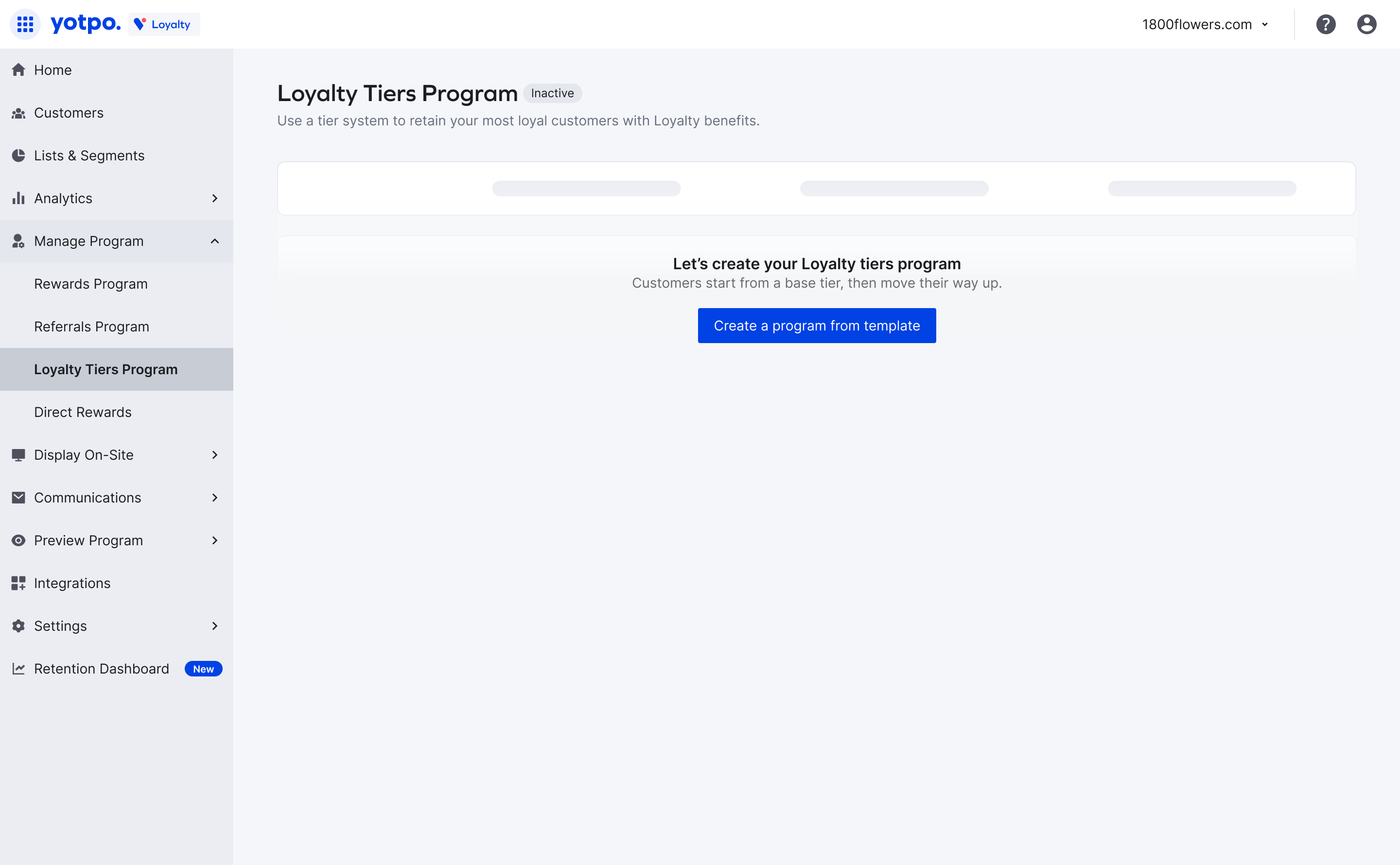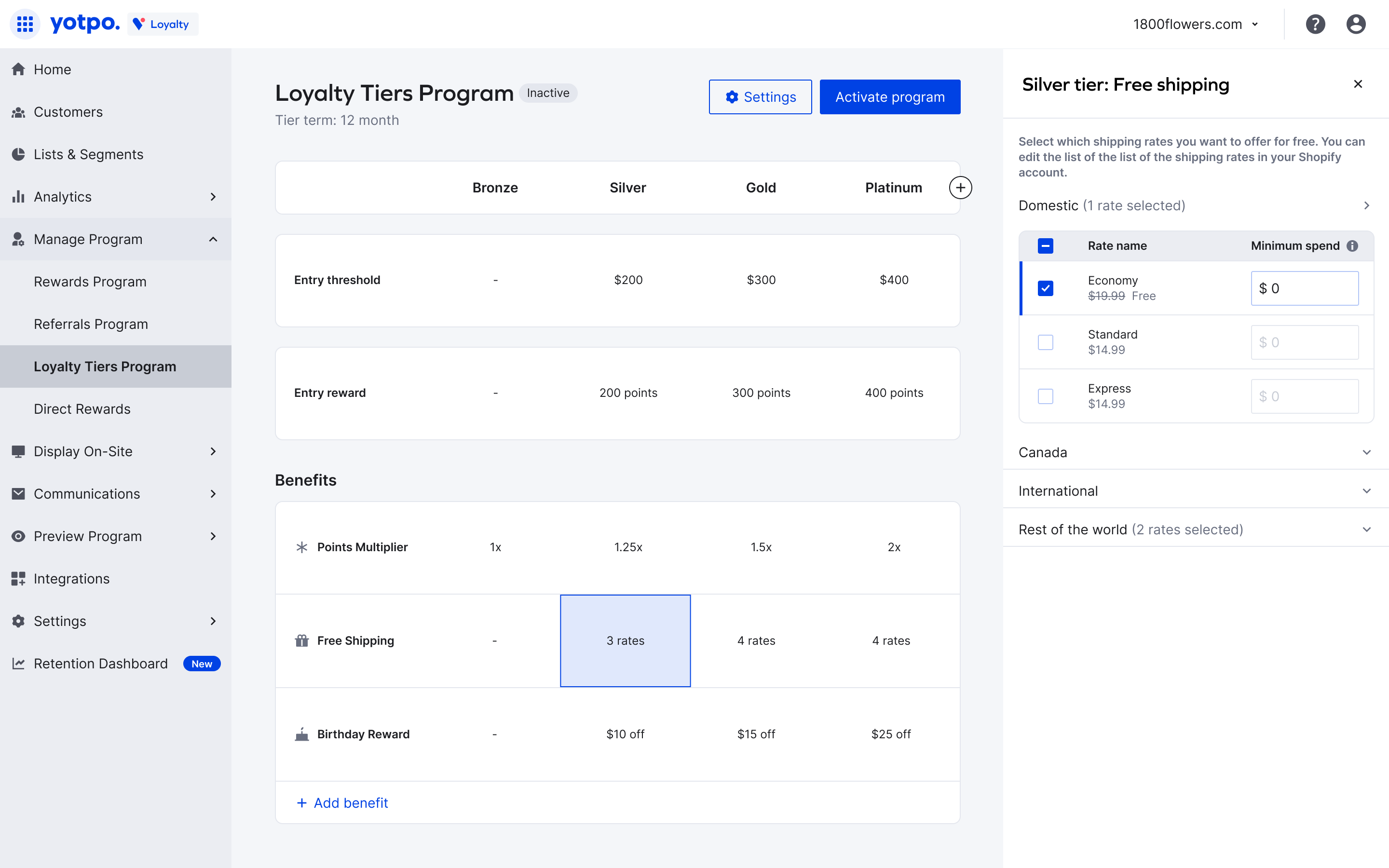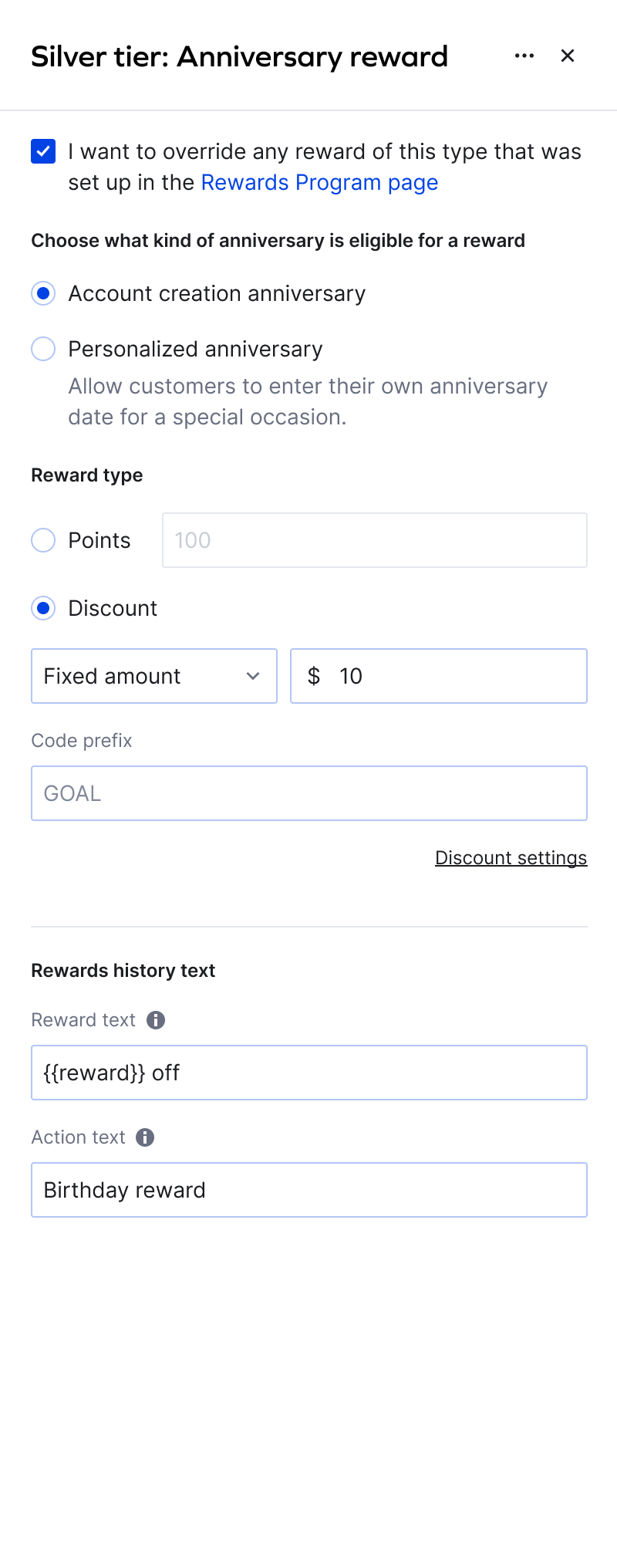Project outcomes
Empowered brands driving over 90% of Yotpo Loyalty's ARR to adopt self-service with an industry-leading UX, strengthening Yotpo's leadership in loyalty.

Project outcomes
Empowered brands driving over 90% of Yotpo Loyalty's ARR to adopt self-service with an industry-leading UX, strengthening Yotpo's leadership in loyalty.

Meet the user persona

Lifecycle Marketing manager in e-commerce brand


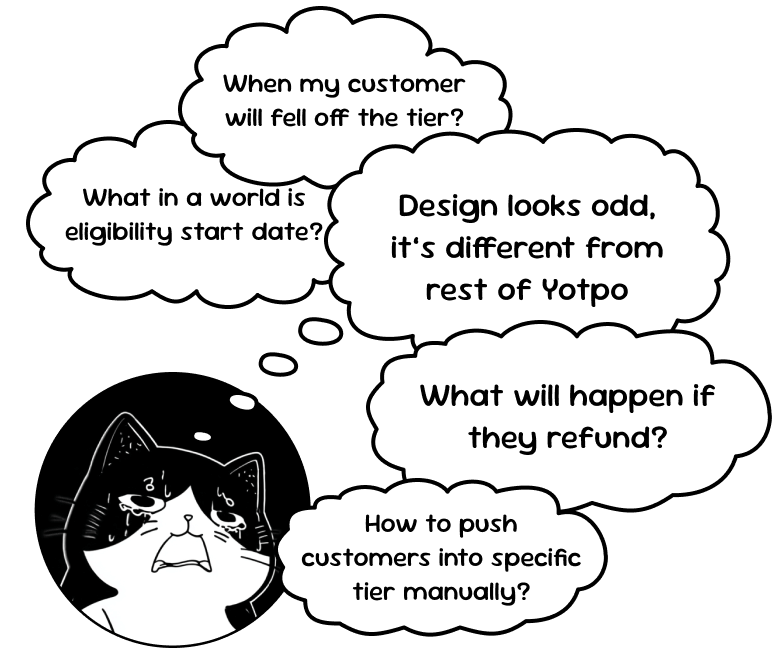


So the challenge was
Reduce IM/CSM costs by enabling customers to self-manage loyalty tiers programs.
By entire UX revamp in very limited Yotpo design system environment, we enabled the full self-service for Yotpo's clients. Created a shift for outdated UX pattern for tiered loyatly programs setup.
Before
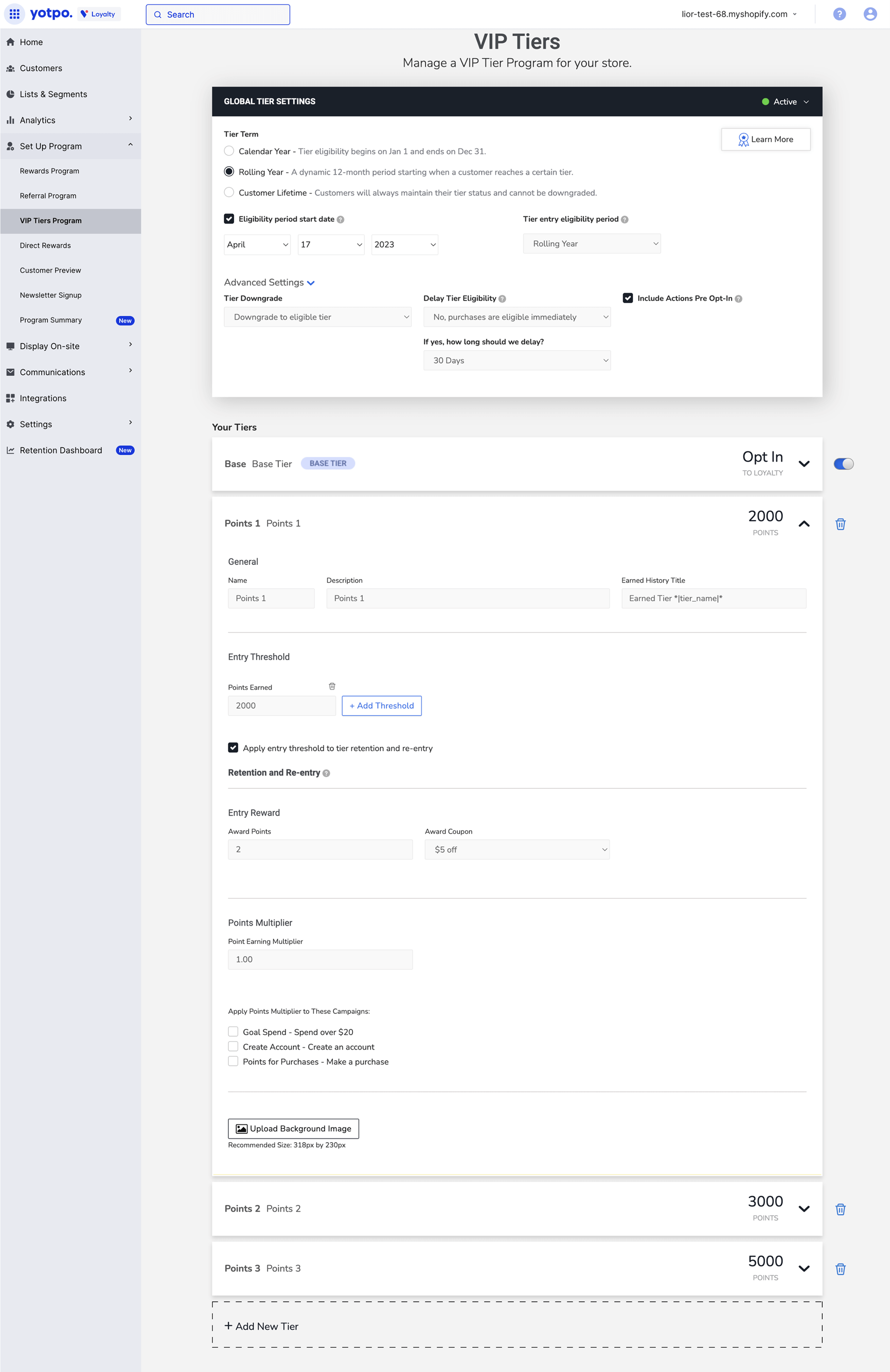
After

Analyzed how shops configure loyalty tiers — number, duration, thresholds, and benefits.
Most merchants used 3–4 spend-based tiers.
Analyzed common patterns in how merchants typically set up their loyalty tiers program.
Users first make decisions in Excel, then configure them in the admin panel.
Gained a deep understanding of the existing complex backend logic behind loyalty tiers.
Much of the original logic was rarely or never used by real customers.
Scoped releases around system limitations and time needed to add components.
The DS didn't support horizontal scroll for the chosen layout.

Most competitors used nearly identical UI patterns, where the setup flow and the shopper's view looked nothing alike – making tier setup confusing.
We decided to rethink this model and searched for inspiration outside standard loyalty-tier interfaces.
Every tier sets up on a separate page.
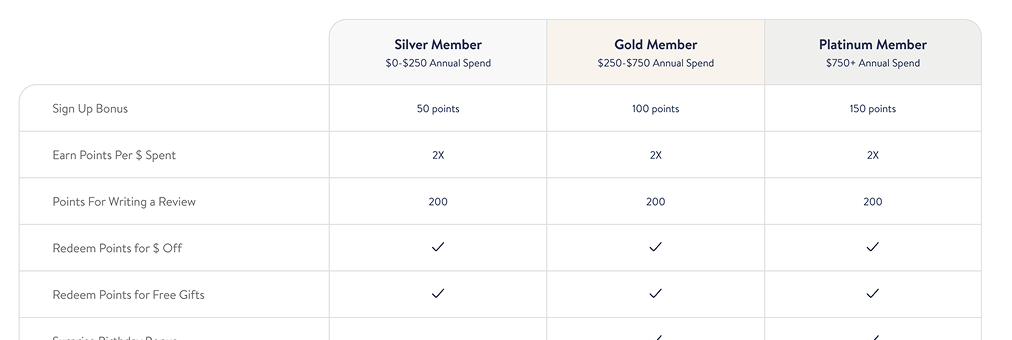
The whole program is displayed on a single table.
In conclusion
Loyalty-tier setup should mirror shopper UI, removing Excel as the middle-man.
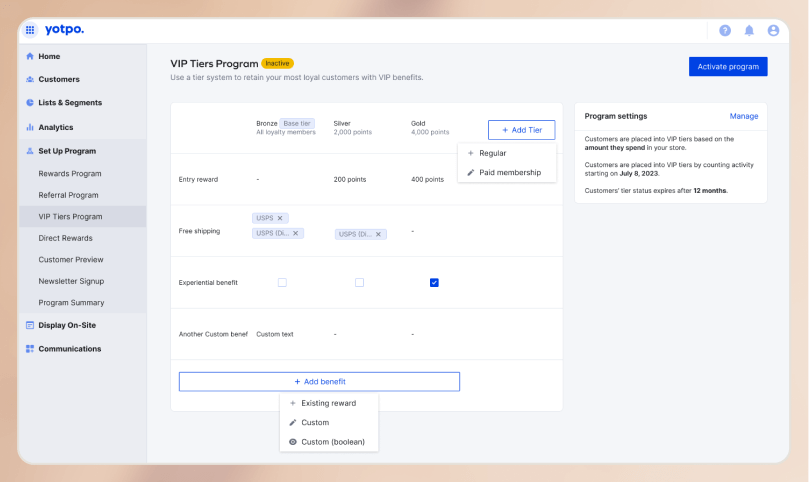
This raw version is a result of the team brainstorm on how the table view of loyalty tiers could look like.
The main goal of this creative session was to challenge the very possibility of table display and wether it's possible with Yotpo's DS.
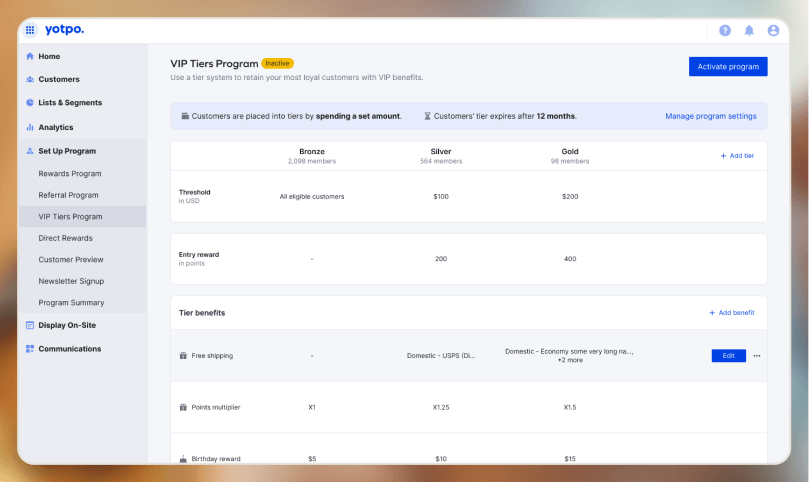
At this stage, the final table view started to take shape. We took most of the key decisions on feature's UX.
However, the inline editing of each cell still was the unresolved issue, as the settings of each cell can be quite complex.
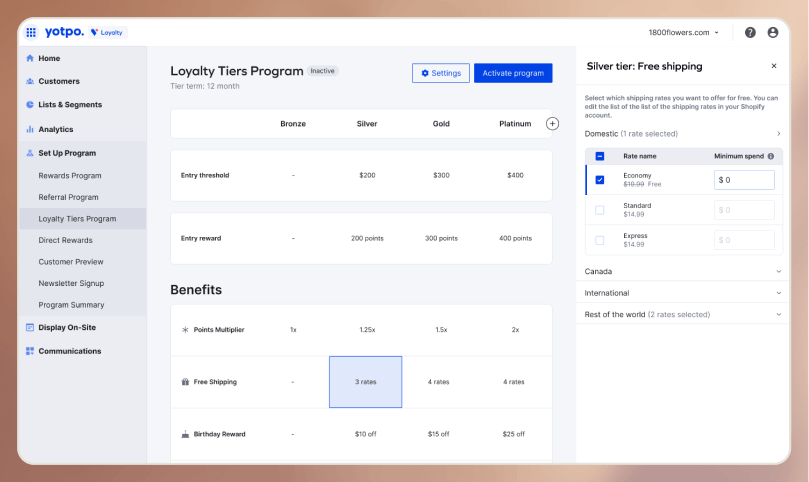
We finalized the editing pattern by introducing a side panel component whose content reflects the selected cell.
This made the layout easily adaptable to any amount of content within the editing form.
The first concept validation came from unmoderated user testing on UserTesting.com, where all 10 participants successfully completed the main task — creating a new tier and editing its benefits.
Later, when testing the table concept with real users and our CSMs, the task success rate remained well above our defined threshold (90%+).
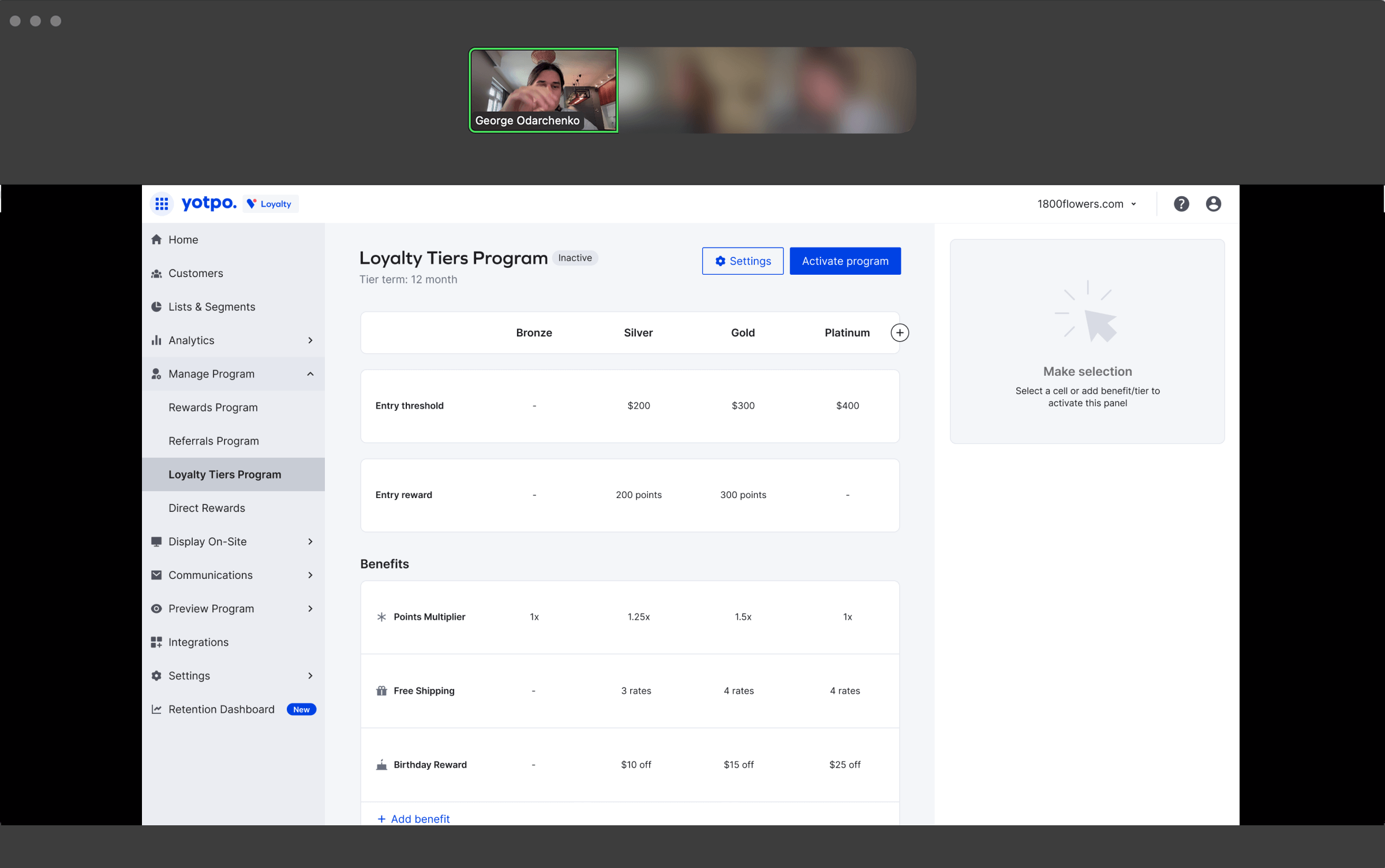
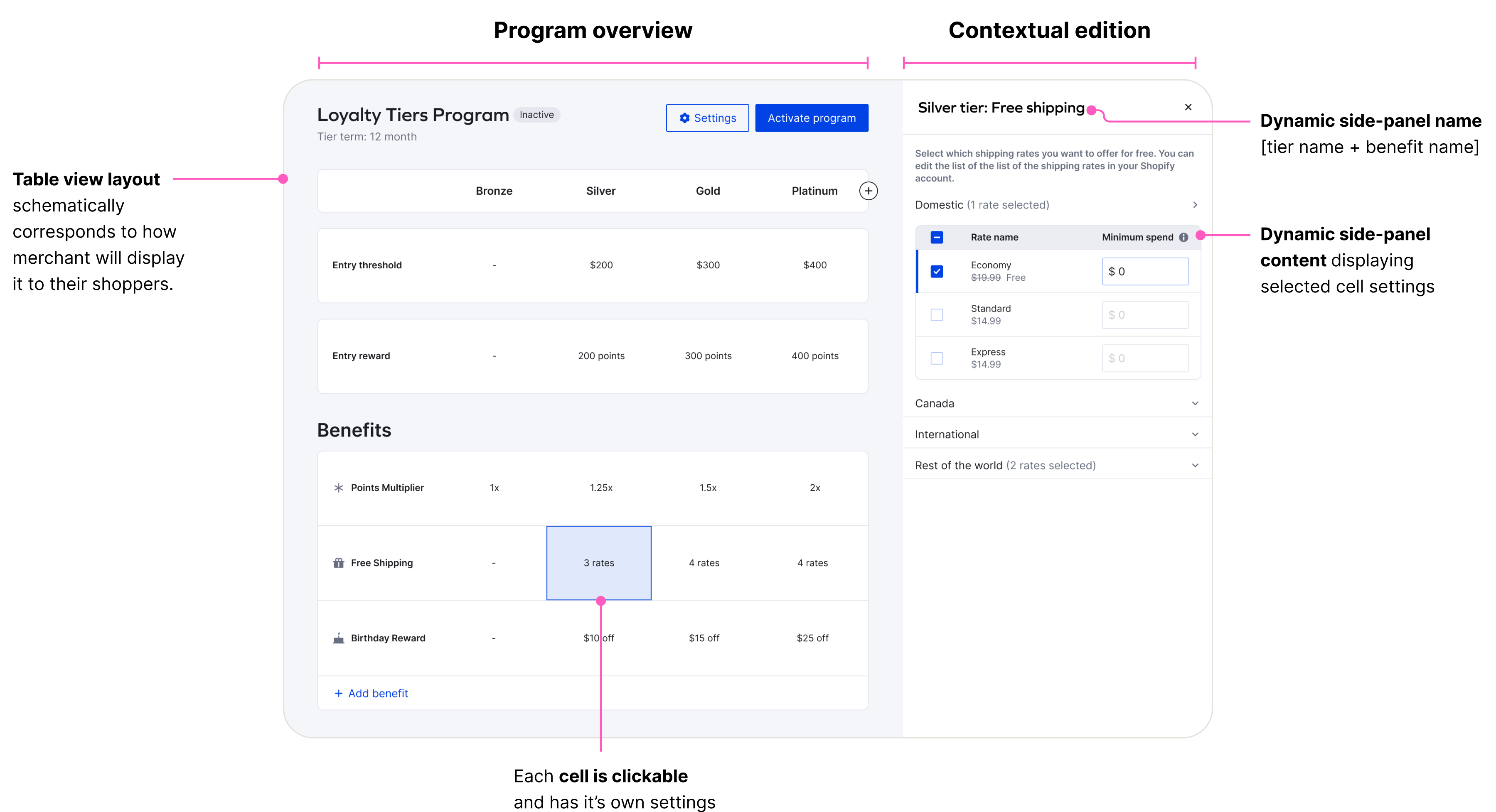

Another major challenge was the global settings section. Displaying all settings alongside the main table proved difficult, so instead of forcing them into the table layout, we revisited the existing settings.
Before

After — Reduced the settings only to essential.
